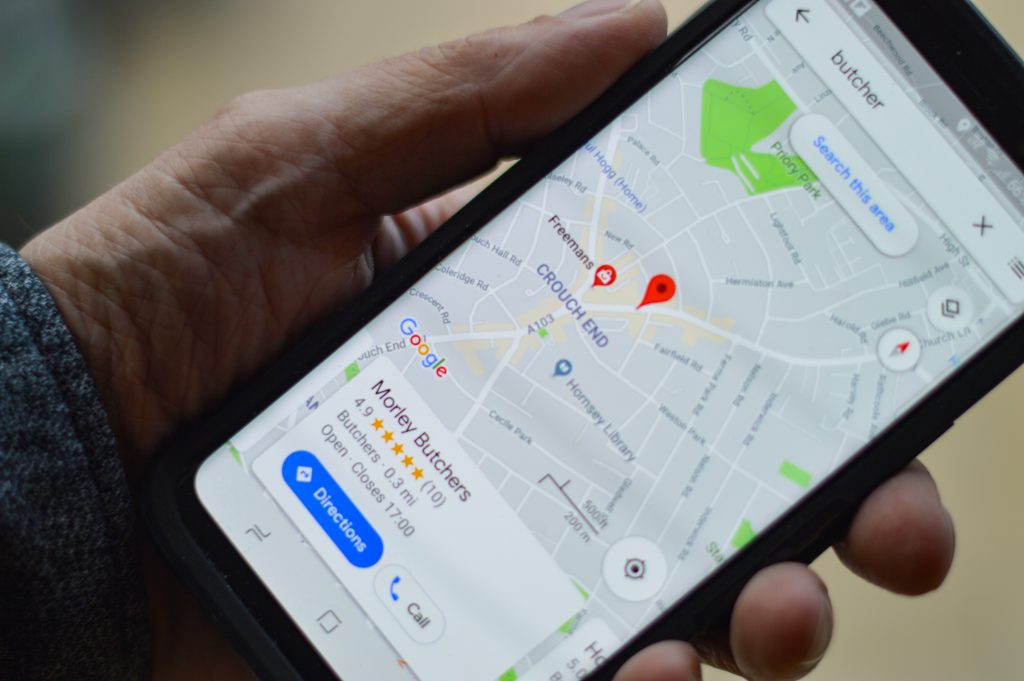In This Article
In this local SEO guide, we’ll walk you through some of the most effective ways to improve your business’s visibility in local search results. As search behaviour continues to evolve, so does the landscape of local search engine optimisation—and staying ahead matters. While local SEO is important for businesses of all sizes, it’s absolutely vital for smaller businesses looking to attract and convert customers in their area. From getting found on Google Maps to appearing in “near me” searches, local SEO helps ensure you’re showing up at the right time, in the right place, for the right people.
1. Create Google Business Profile

The first tip on how to improve local SEO rankings is the simplest. If you haven’t already, you’ll need to set up your Google Business Profile account—you can find the instructions here. A Google Business Profile allows local businesses to appear in search results when users are looking for them online. The best part? It’s currently free, making it an accessible marketing tool for businesses of all sizes.
2. Optimise your Google My Business account
Once you’ve created your Google Business Profile listing, it’s time to optimise it for maximum impact in your local area. To get the most out of your profile, make sure to include the following:
- A detailed, unique business description that’s properly formatted and includes relevant links.
- Accurate business categories that reflect your services.
- Plenty of photos, including a high-resolution profile image and cover photo.
- A local phone number.
- A business address that matches exactly with the one on your website and across local directories.
- Your opening hours and days (if applicable).
- Real customer reviews (we’ll cover this more in a bit).
3. Consistency is key: NAP
The third tip on our local SEO checklist is to ensure that your business has full NAP (Name, Address, Phone Number)one every page of your site. Google is cracking down on local businesses whose information is inconsistent or difficult to verify, and rewarding local businesses with clear, concise, and easily-accessible information. Review your site’s pages and ensure that all your business information is consistent throughout the site.
It’s a good idea to use Schema.org markup on your NAP to give the search engines all they need to display your company information correctly.
Here’s the code that you can adapt to your own website.
<div itemscope itemtype="http://schema.org/LocalBusiness">
<p itemprop="name">COMPANY NAME</p>
<p itemprop="address" itemscope itemtype="http://schema.org/PostalAddress">
<p itemprop="streetAddress">ADDRESS LINE 1</p>
<p itemprop="addressLocality">CITY</p>,
<p itemprop="addressRegion">REGION</p>
<p itemprop="postalCode">POSTCODE/ZIP</p.
<p itemprop="telephone">PHONE NUMBER</p>
<meta itemprop="latitude" content="LATITUDE" />
<meta itemprop="longitude" content="LONGITUDE" />
</div>
It’s more simple than it looks – all you need to do is change the text in capitals to your own details.
4. Boost customer confidence with reviews

According to a recent survey, 84 percent of people trust online reviews as much as a personal recommendation and local reviews have a direct correlation to local search rankings. So it’s absolutely essential to invest your time and effort to rake in the positive reviews. But the single most important variable determining inclusion and ranking are Google reviews specifically, according to Digital Marketing Works (DMW). Here are some ways of boosting your review intake:
- Encourage reviews: create a page on your website that gives instructions to your customers on exactly how they can review your business (i.e. yourwebsite.com/review-us/). You won’t believe how effective this is when it comes to getting in touch with customers, especially the non-technical ones. Visit this site for more information.
- Social media: make sure your business has a Facebook page – this is one of your most important resources – partly because of how often people use social media, but also because the reviews will show up on Google, so there’s no hiding. There are loads of other social media platforms, like Hootsuite and Tiny Torch that allow you to monitor and get alerts any time your brand is mentioned. It’s a good idea to respond to your reviews, especially the bad ones, to show that your customer service is in tip-top shape.
- Don’t tunnel in on Google: while Google reviews is your priority, you’ll also want to focus on getting reviews on your Yelp page (they’re used by Apple maps), along with other local directories like LinkedIn and Yellow Pages.
5. Use local structured data markup
Structured data markup (SDM) — also known as “schema markup”— can be added to your website’s code to give search engines with more information about your business, like the products you sell, reviews you’ve collected, services you offer etc. If you use SDM appropriately, it can be an excellent way of elevating your ranking above your competitors.
Check out Google’s Structured Data Testing Tool which can you use to check whether your markup is properly implemented. Or if coding makes you recoil in horror, you could also try Google’s Data Highlighter to mark up content with your mouse (ALERT: your website will need to be set up with Google Search Console for this to work).
Need a hand getting your local SEO up to scratch? Whether you’re just getting started or looking to fine-tune your strategy, Found is here to help. Our team of experts knows exactly how to get your business noticed in local search—so get in touch and let’s grow your visibility, together.



